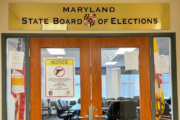Centers of Disease Control and Prevention, and local public health experts say the District has the worst breast cancer mortality rate of any American city.
The disease is also the second largest killer of American women in the United States. Statistics like these prompted Congress to set up a special panel of scientists, government officials and advocates in 2008 to look at the war on breast cancer and what it will take to win.
After more than two years of work, the Interagency Breast Cancer and Environmental Research Coordinating Committee published its list of recommendations last week. Panel members are now trying to turn the recommendations, including more funding for research and expanding studies on potential causes, into reality.
On Thursday, panel members spoke at a forum at George Washington University. They said it is time to put breast cancer prevention on par with treatment and the search for a cure. Prevention includes researching possible environmental causes of the disease — from the food people eat, to the chemicals in pesticides and shampoo.
Jeanne Rizzo, CEO and president of the Breast Cancer Fund, co-chaired the federal panel. The Fund has been working for years to call attention to toxic chemicals and radiation that could trigger breast cancer.
Rizzo says the recommendations amount to a “paradigm shift,” explaining that only a fraction of federal breast cancer research money currently goes toward looking at environmental causes.
Most of the research on breast cancer causes takes place under the auspices of the National Institute of Environmental Health Sciences, which is part of the National Institutes of Health.
NIEHS Director Linda Birnbaum says while genetics plays a role in determining breast cancer risk, the majority of women who get the disease do not have a close relative with it.
She says there have been studies of women who immigrated to the United States from Japan, a country with a much lower breast cancer rate. Over the course of several decades, their breast cancer risk rose to match that of American women.
Birnbaum says the change in risk is not due to genes because they don’t evolve that fast.
“Genes don’t change that quickly. Our genes take generations, mult-multi generations to change,” she says, adding that the environment was the likely cause.
She says once researchers track down the environmental causes of breast cancer, it may become a largely preventable disease.
“You can’t change your genes,” she says, “but you can change your environment.”
Follow @WTOPLiving on Twitter.







